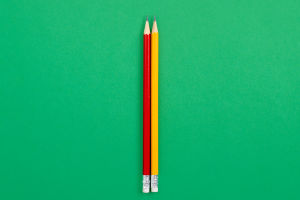An umbrella, a simple yet indispensable accessory, plays a vital role in shielding us from both rain and harsh sunlight. Whether you’re preparing for a drizzle or seeking protection from the blazing sun, selecting the right umbrella requires careful thought.
Lykkers, this guide will help you explore how to choose the best umbrella while sharing some fascinating facts along the way.
What to Look for in an Umbrella
When shopping for an umbrella, you need to balance practicality with style. The right umbrella isn’t just a functional tool—it’s also a fashionable accessory. Here are some key factors to keep in mind:
1. Size Matters
Consider the size of the umbrella. Compact, foldable umbrellas are perfect for those on the go, easily fitting into bags or backpacks. On the other hand, larger, traditional umbrellas offer broader coverage and often provide more durability. For city commuters, a smaller size might be ideal, while those living in windy regions might prefer a sturdy, full-sized umbrella.
2. Material and Durability
A good umbrella should be built to withstand strong winds and harsh conditions. Look for umbrellas made of sturdy materials like reinforced fiberglass or stainless steel. Additionally, the canopy fabric should be water-resistant and quick drying. Polyester and pongee are common materials used in high-quality umbrellas, ensuring both durability and ease of use.
3. Handle and Grip
Don't underestimate the importance of a comfortable handle. Whether it’s made from wood, plastic, or rubber, the handle should offer a secure and comfortable grip. Ergonomic designs help prevent hand strain, making it easier to carry the umbrella for long periods.
Pricing and Where to Shop
Umbrellas vary in price, depending on the brand, material, and design. You can find budget-friendly options starting around $10. However, high-end umbrellas with advanced windproof technology or designer aesthetics can go up to $50 or more. Local department stores and specialty fashion shops often carry a wide range of choices. For those looking for something unique, boutique shops often feature umbrellas with creative patterns and designs.
Fun Facts About Umbrellas
The word "umbrella" comes from the Latin word umbra, meaning shade or shadow.
In the 18th century, umbrellas were primarily used by women. It wasn’t until the mid-1700s that men began to use umbrellas, thanks to an English philanthropist named Jonas Hanway.
Early umbrellas were made of wood or whalebone, covered with oiled canvas to protect against rain.
The Guinness World Record for the largest umbrella belongs to a shopping mall in the UAE, measuring over 50 feet wide.
Historical Insights: A Long-lasting Accessory
Umbrellas date back thousands of years. Ancient Egyptians and Chinese civilizations used parasols as symbols of nobility and protection. These parasols weren’t waterproof but were mainly for sun protection, displaying the wealth and status of the user. Today, umbrellas have evolved into practical tools accessible to everyone, while still carrying an element of elegance and sophistication.
How to Choose the Right Umbrella for Lykkers
When it comes to choosing the right umbrella, think about your lifestyle and daily needs. If you’re someone who enjoys long strolls in the park, a robust umbrella with UV protection may be ideal. Alternatively, for those who travel light, a sleek, collapsible umbrella will be your best companion.
Umbrellas serve not only a functional purpose but can also enhance your personal style. By selecting an umbrella that fits your needs, you’ll be ready for whatever the weather has in store, rain or shine.
In Summary
Choosing the right umbrella comes down to understanding your needs, considering materials, and finding a balance between function and style. Whether it's for fashion, practicality, or simply a daily companion in unpredictable weather, the right umbrella can enhance your lifestyle in more ways than one. So, next time rain is in the forecast, Lykkers, you’ll be ready with the perfect umbrella in hand—stylish, durable, and dependable.


